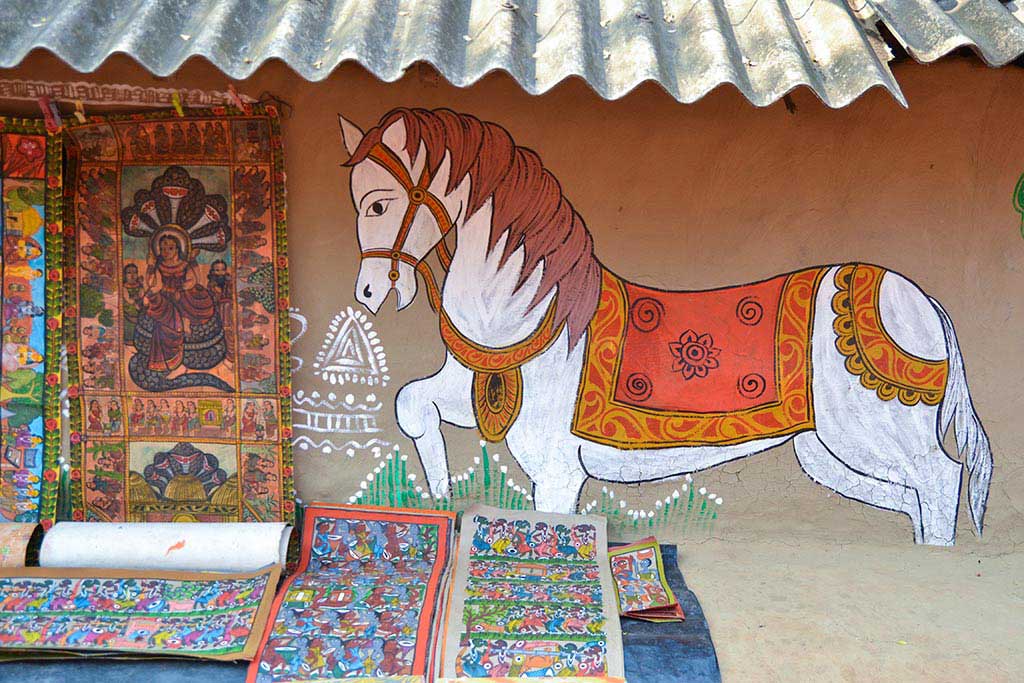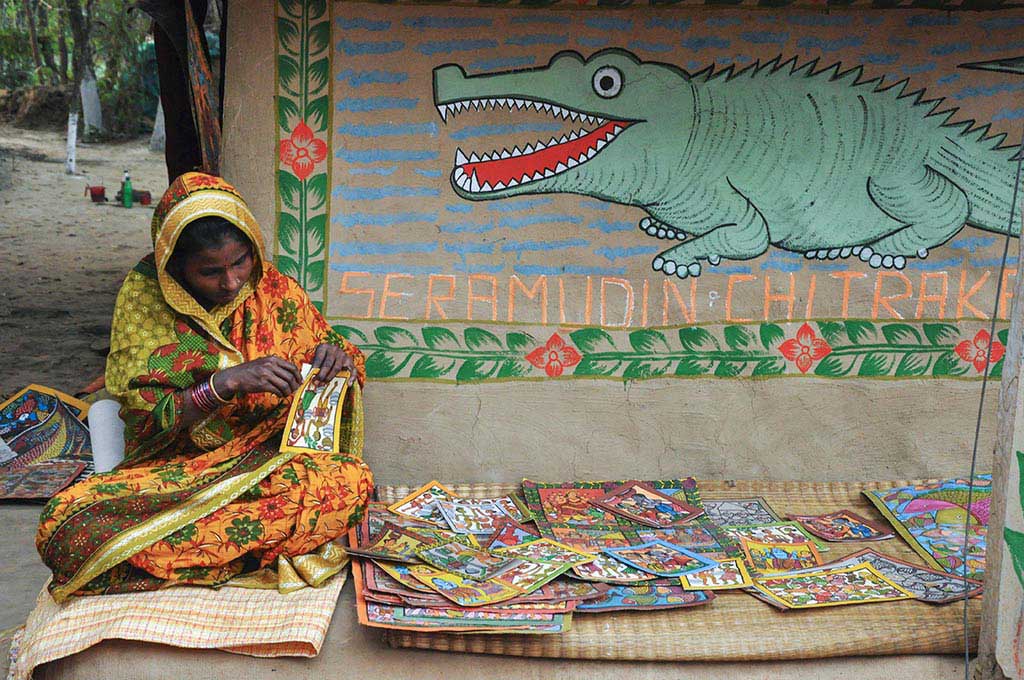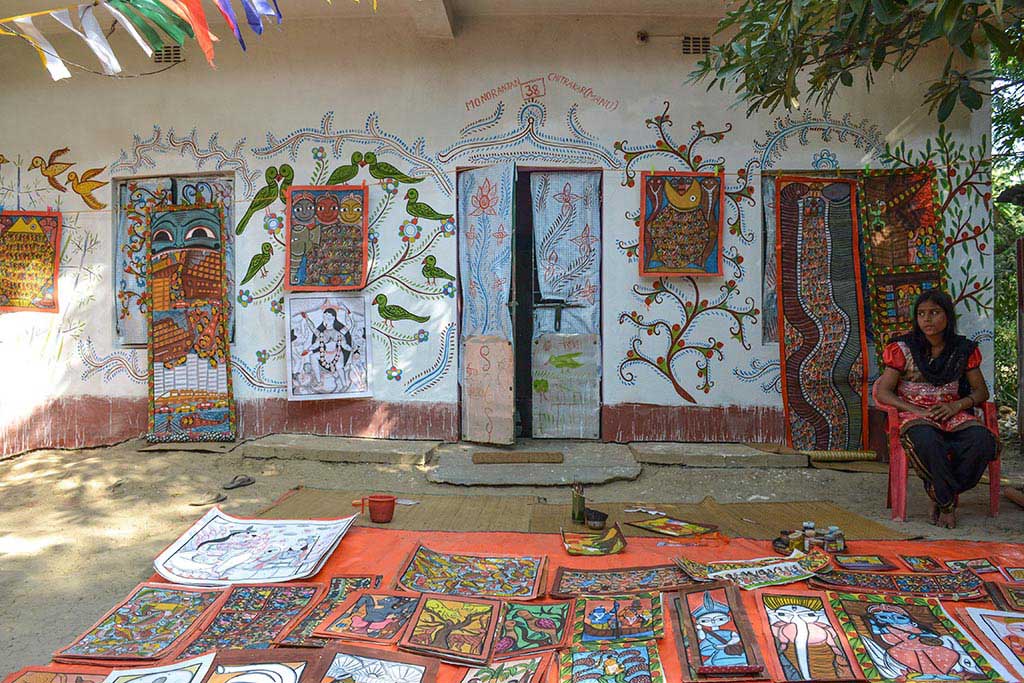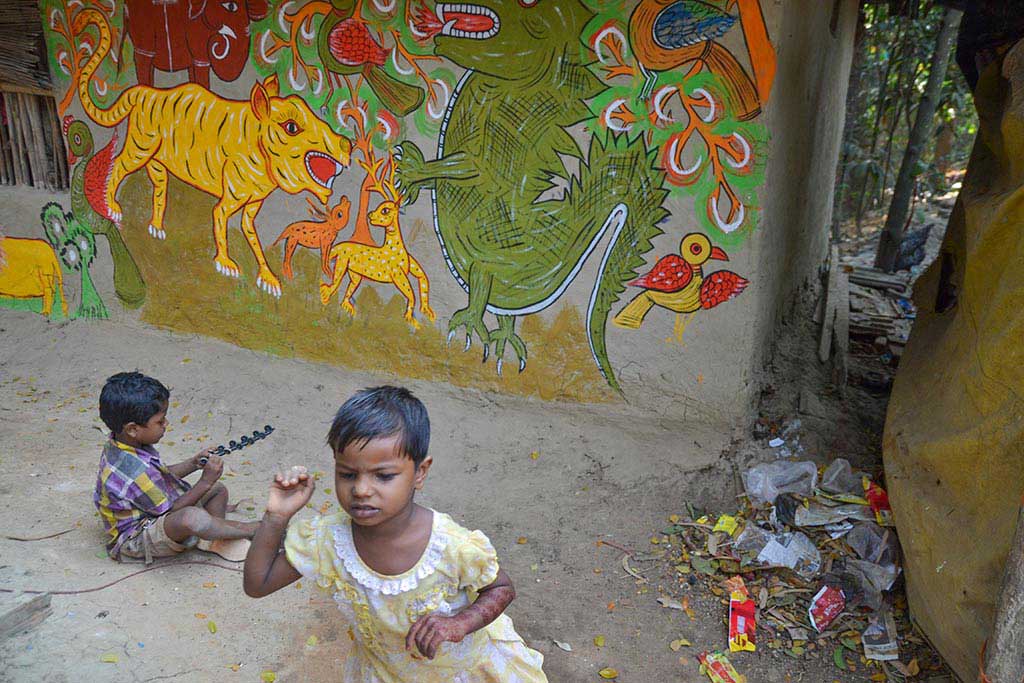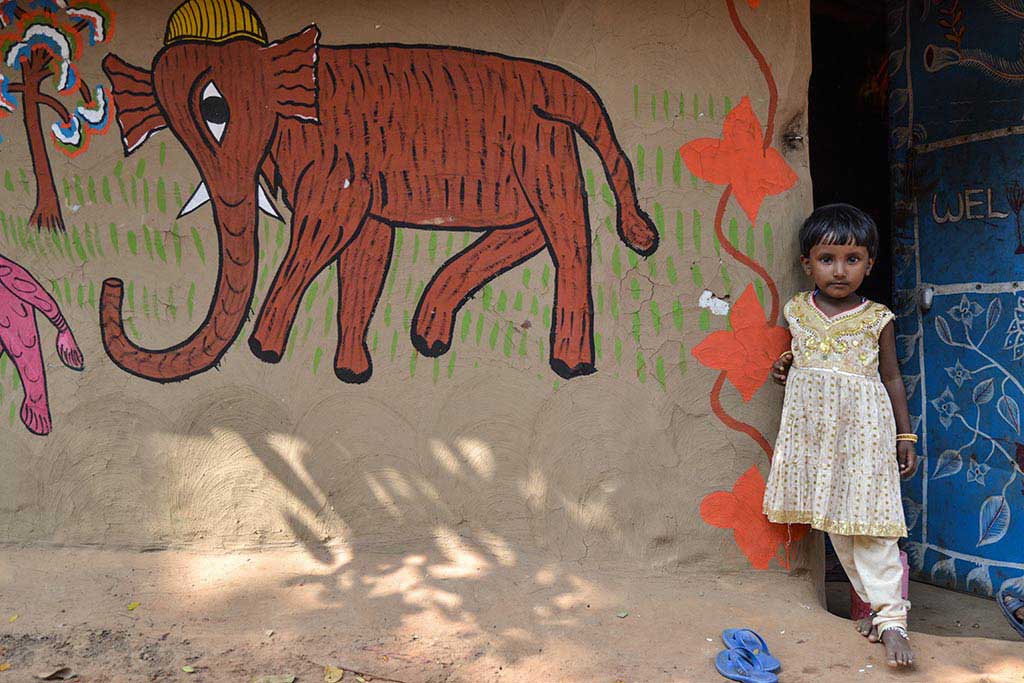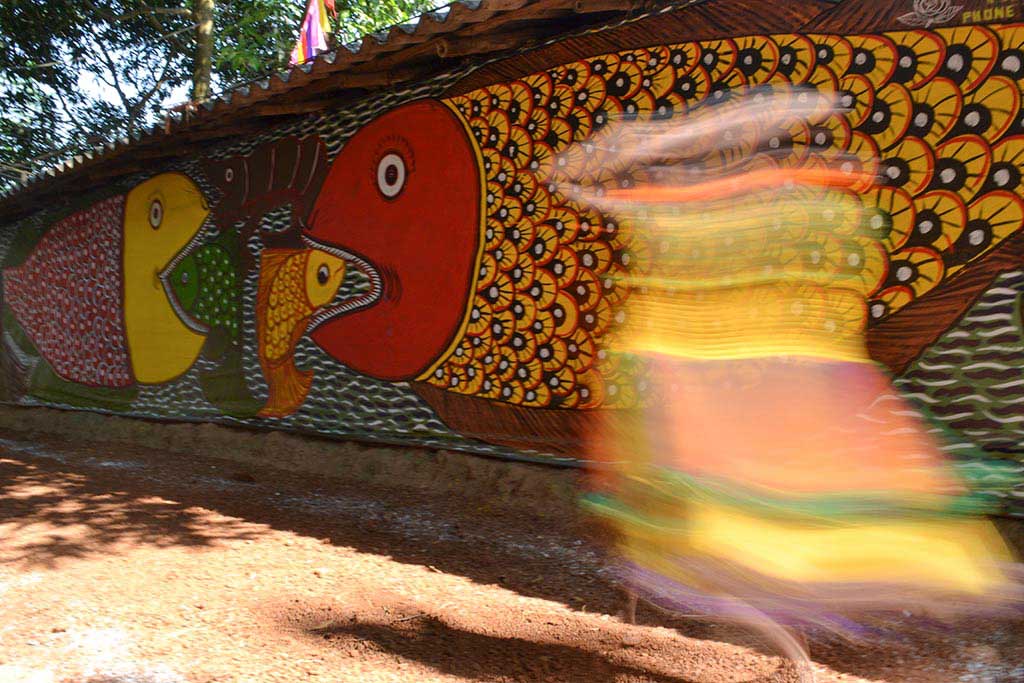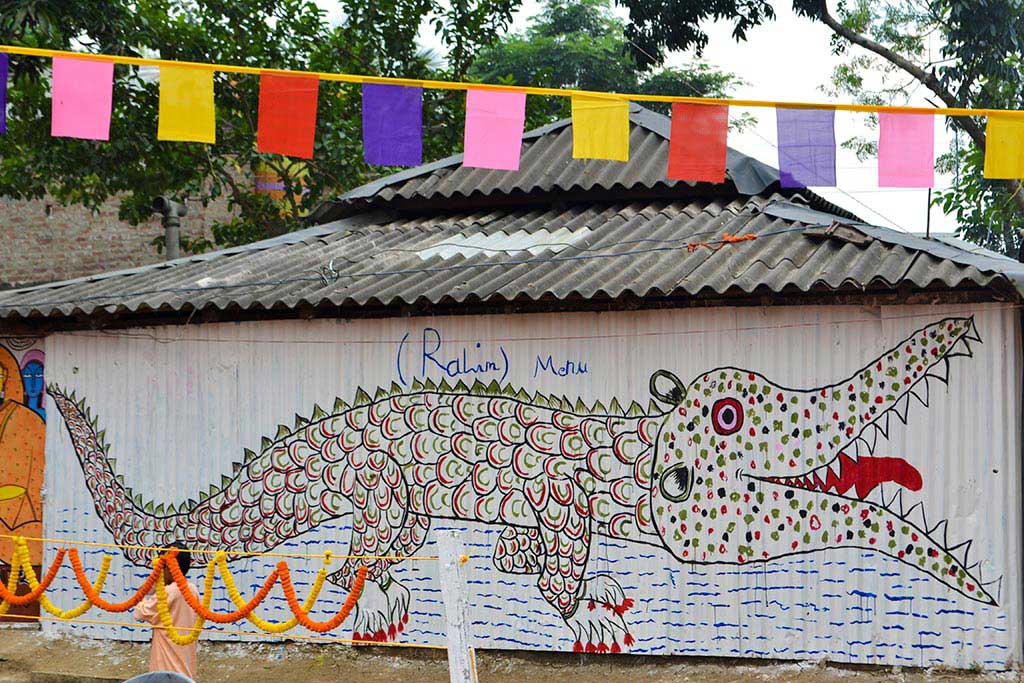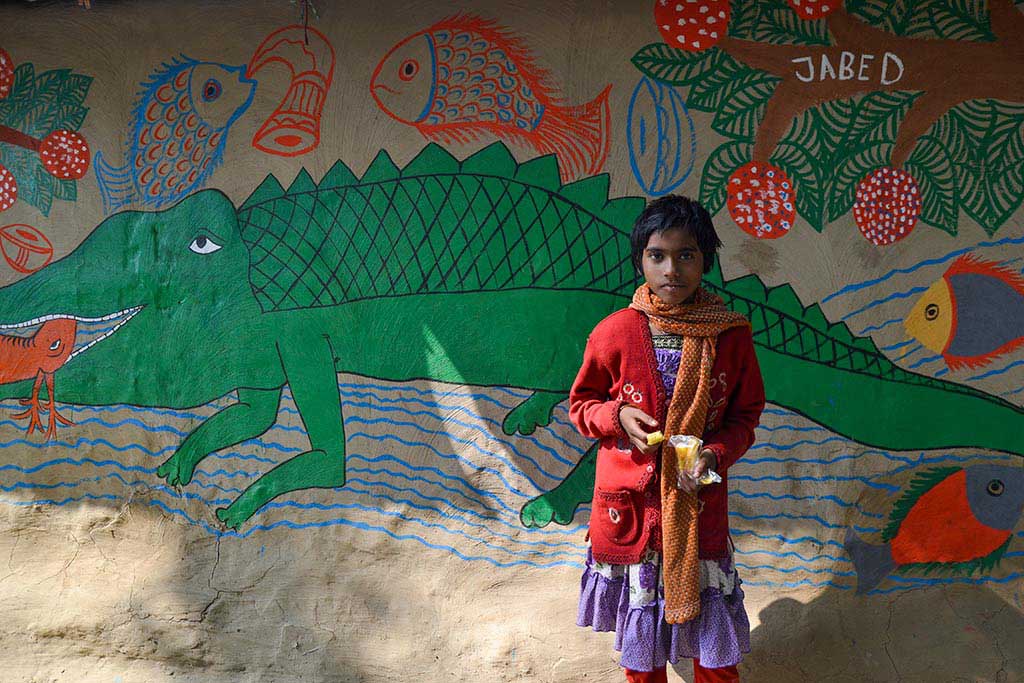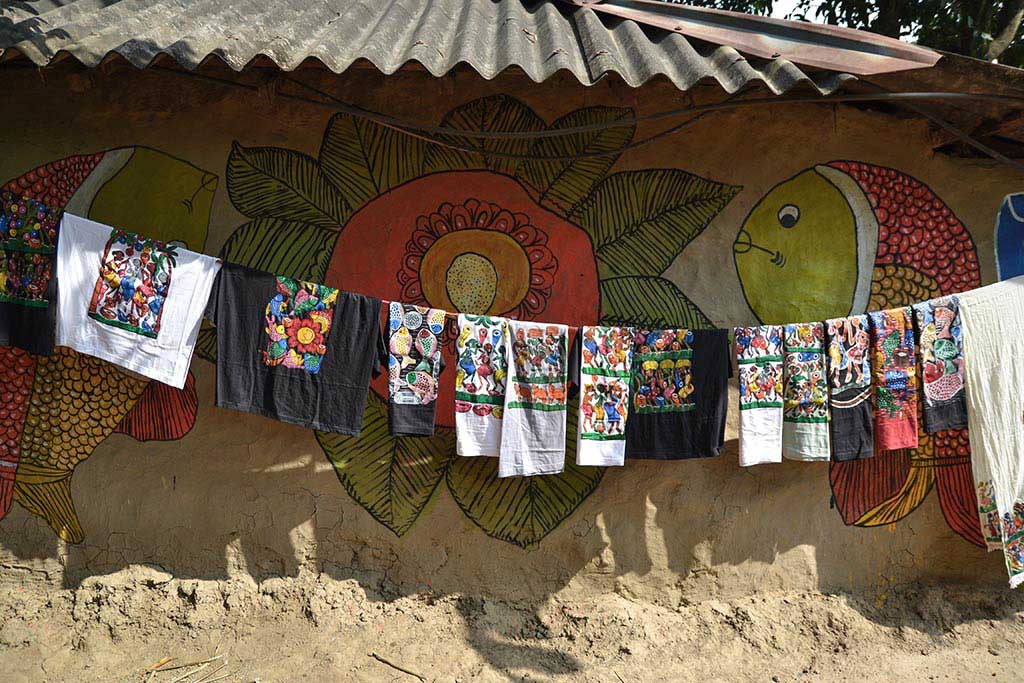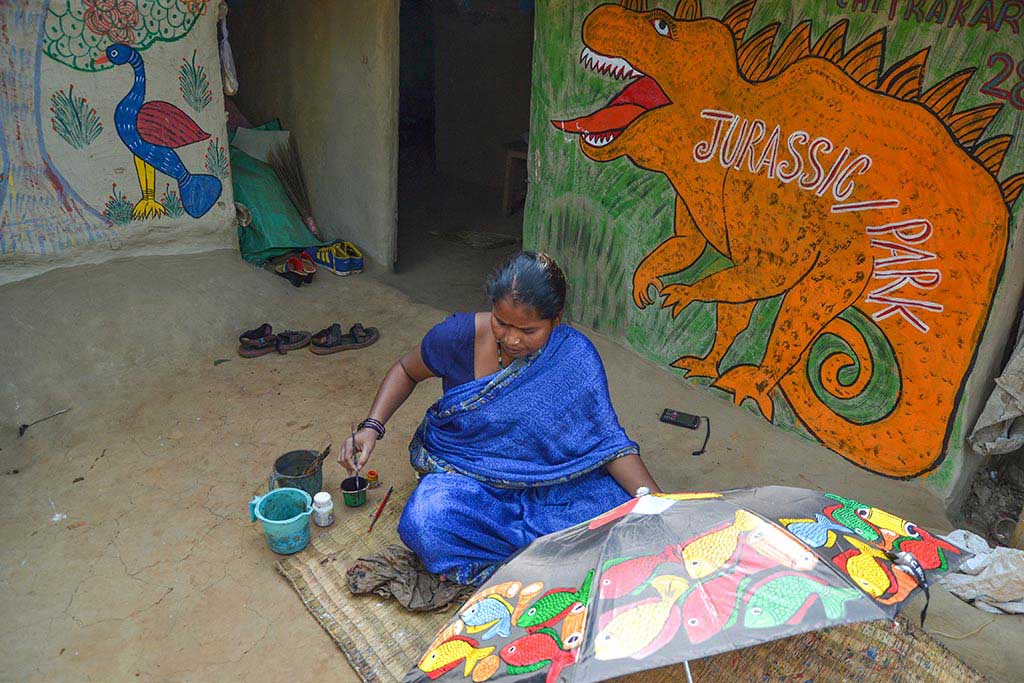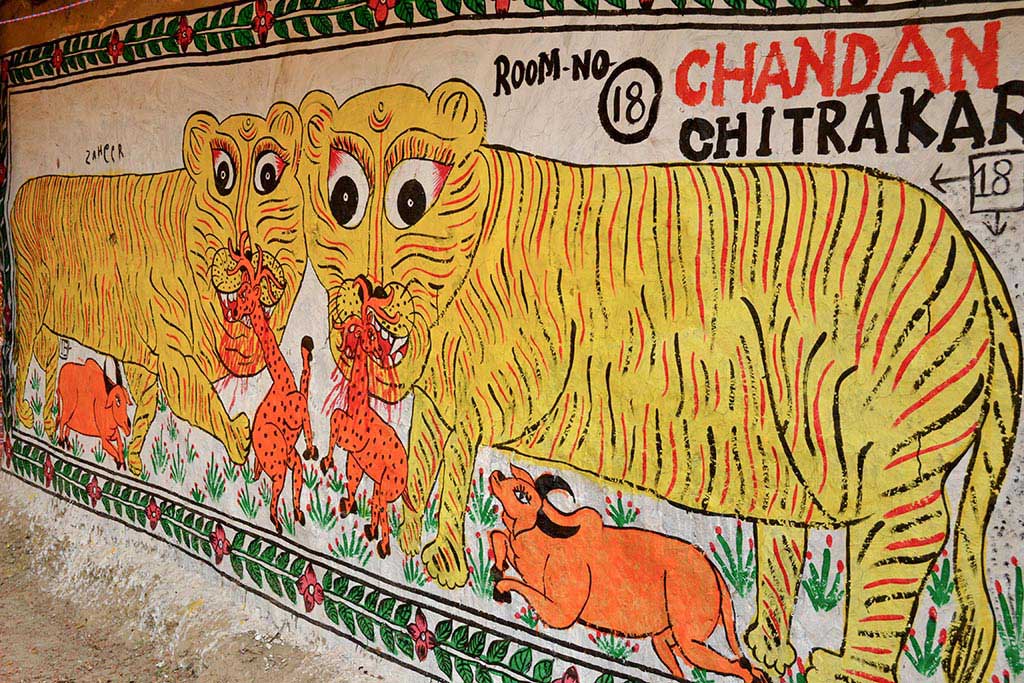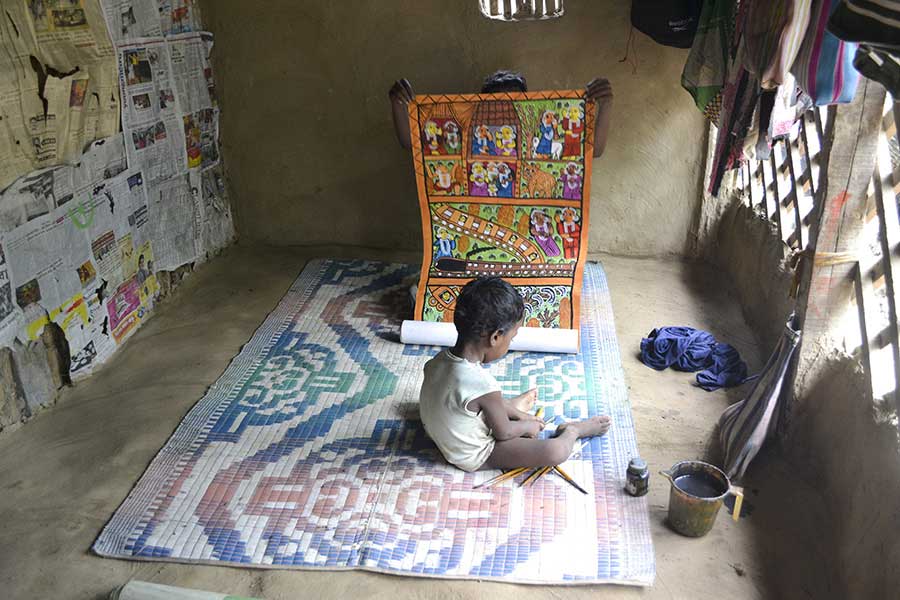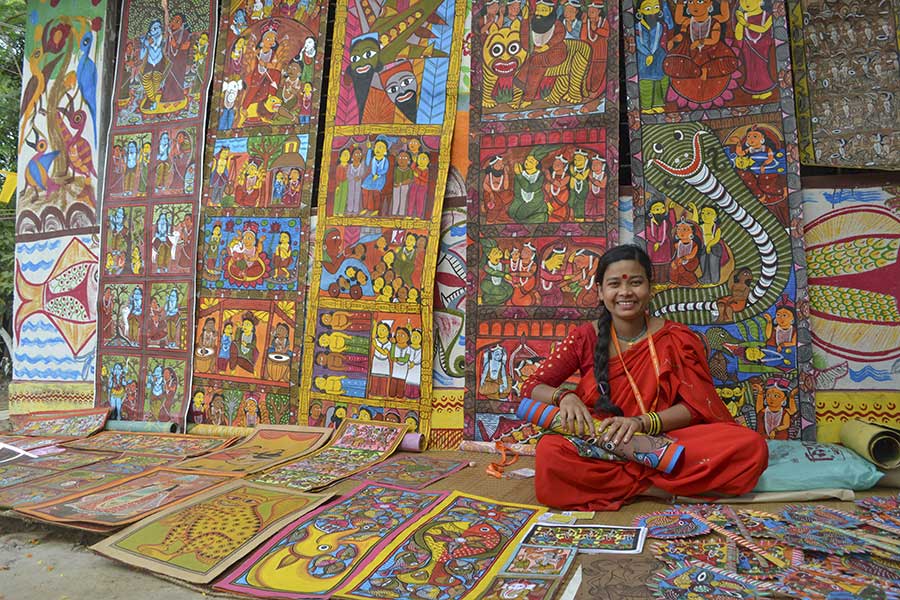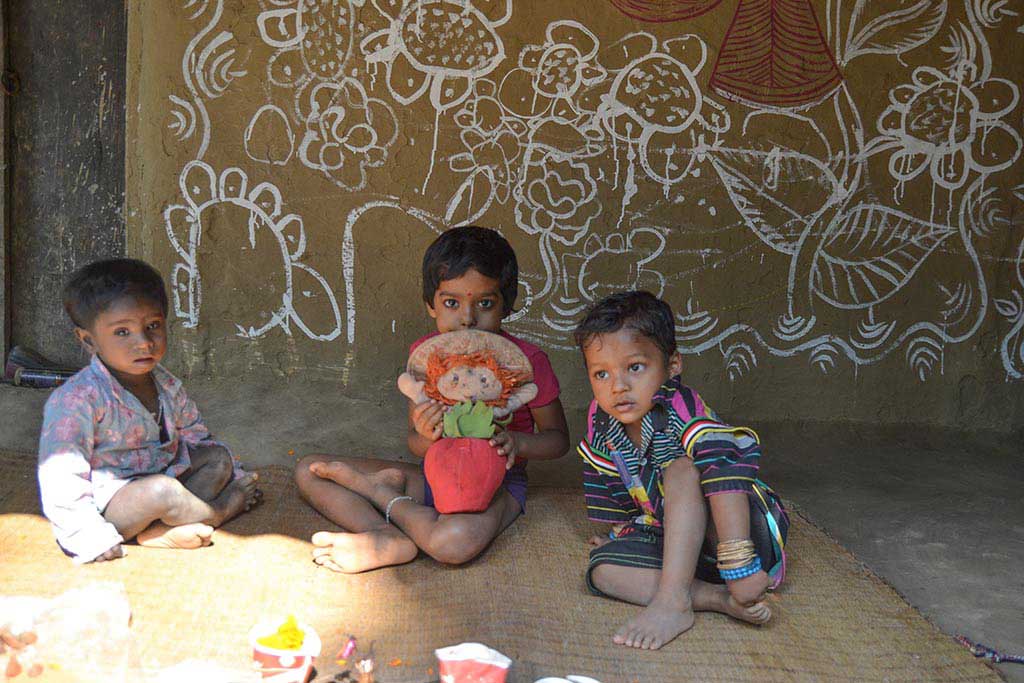Storytelling tradition has found multitude of vernacular expressions in Indian life. Patachitra is a storytelling tradition of Medinipore region of Bengal in eastern India. In this unique art form, oral tradition meets the visual structures of a narrative.
The bard presents the story with pictures and simultaneously narrates with a song, which is called Pater Gaan. The word ‘Pata’ is derived from the Sanskrit and Pali word ‘Patta’, which means ‘cloth’. ‘Chitra’ means picture. Patachitra means picture painted on cloth. The artists portray this art in different kinds of Patas, namely square form or in scroll forms. Patachitra is appreciated by art lovers for its effortless style of drawings and colours. The painter community is called Patua.
All of them bear the last name Chitrakar meaning painter. Patuas generally use natural colours extracted from various trees, leaves, fruits, flowers, seeds and clay. Initially men painted and sang while the women helped in making colours. Women were not supposed to paint the pata themselves, but all these have changed now.
‘Patuas’ and ‘Chitrakars’ have been referred to in literary works dating back to more than two thousand five hundred years. The style of painting bears a strong linkage with paintings of Mohenjo-Daro and Harappa. The concept of scroll painting spread to Bali, Java, Sri-Lanka, Malayasia and Tibet. ‘Patachitra’ was originally an art form of the Santhal community. In the past they used to paint scrolls on the origin of their community. They painted ‘Patachitra’s depicting the birth of their first ancestors, how they had seven sons and seven daughters and how these seven brothers were married to their sisters.



